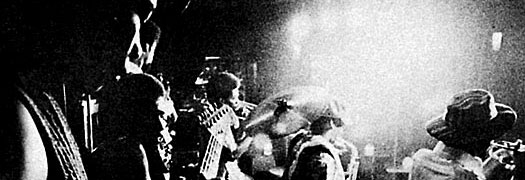
Features | Lists
By The Staff

Milton Nascimento
Courage
(A&M; 1968)
Nascimento’s got those X-Files black oil eyes on the cover, probably an odd introduction to the man for North American audiences, a base Nascimento’s handlers could have exploited had Nascimento any handlers; perhaps he did: bossa nova—and by sloppy, clearly ignorant extension, Tropicalia—was working magic on foreign ears through the novelty of Black Orpheus’s bright colors and its adorable Rio children, so Nascimento’s trek to America and Van Gelder Studios seemed a wise choice. Already making a splash in Brazil, the consummately delicate baritone instead delivered the strangely anti-exotic Courage, a sprightly fusion of jazz, crooner balladry, French pop, and the music of Nascimento’s home in Tres Pontas (like rough, coastal folk and samba). In the late 60s there was such a sprawling web of influence cauterizing the gap between continents north and south that Nascimento, in trolling the blurry roots of his safest styles and singing in both Brazilian Portuguese and English, sounded comfortable becoming an international superstar.
It helped that Eumir Deodato was on board; his arrangements never overcome Nascimento’s gorgeously malleable presence—a trick he probably learned working with Sinatra and Wes Montgomery, say—but dose each track with a romanticism that, while common in the A&M stable, alludes to the whimsy of a Serge Gainsbourg joint while helping Nascimento flex his impressive range. And then there’re Herbie Hancock’s tripping piano and Deodato’s own gothic organ, challenging Nascimento to loosen up on “Tres Pontas” or explode on the shuddering “Rio Vermelho”; behind there’s Airto Moreira’s percussion, mixed intuitively, rarely without horns and flutes blazing, pestering a wandering Milton to hurry up a lazy cadence. And “Catavento” plain kills, a proving ground for the exciting, seamless assimilation at hand, making the same statement with one give-and-take between flute and voice as Os Mutantes did through a whole canon of uproarious bliss. Though awkwardly out of step with Tropicalia and perhaps ignored for it in a recent resurgence of the form, Nascimento and Courage still seem the perfect communication of that time in Brazil’s sonic heritage: unabashed, curious, and wildly imaginative while still as popular and as accessible as any Hollywood exec could hope.
Dom Sinacola
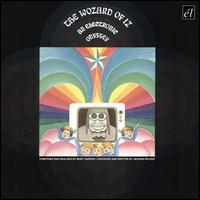
Mort Garson
The Wozard Of Iz – An Electronic Odyssey
(A&M; 1968)
“Kansas is a bummer really. And I’m splitting”
The Wozard Of Iz is, as you may have guessed, the story of Dorothy, in rose-tinted spectacles and a dope-muffled mind set to the Moog adventures of Mort Garson. Mort died in April 2008, sparking a belated interest in his music (this album being plucked as the first of, no doubt, many reissues last month), but, considering, he had a strange musical career. He wrote “Our Day Will Come,” made famous by Doris Day, and produced Glenn Campbell’s incomparable take on “By The Time I Get To Phoenix,” for example. Then, just when the world of easy-listening was threatening to smother him like a constrictor, he discovered the Moog, releasing the first ever solely Moog-based album Cosmic Sounds in 1967. It contained 12 songs. One for each sign of the Zodiac.
Seemingly inspired by the astrological and all things counter-culture, Garson’s next project was Iz. Based on the writings of Jacques Wilson and starring aspiring “It” girl Suzie Jane Hokum (a one-time girlfriend of Lee Hazlewood), Iz is an uncomfortable listen, attacking the increasingly influential pillars of consumerism, advertising, and television amidst synth thunder strikes a la Pink Floyd’s “On The Run” and cooed analogue lullabies like the sumptuous “Big Sur” and “I’ve Been Over The Rainbow.” And what was over that rainbow? According to Dorothy, “I found nothing.”
The story is similar but the characters are warped: we have the Scared Crow, an excessive consumer who has substituted “think” for “things” and, “things” for “zing,” the evil witch from deepest Brooklyn, and the Lion who becomes the Lyin’ Coward, a ruthless preacher man with questionable morals. It would be unfair to say that at times the use of language doesn’t tire (though some may find a little nostalgic charm in the “tune in, turn on, and drop out” mentality) but there is no denying the power of the instrumentation behind the story.
In the few full songs a keen ear for melody wins out (the aforementioned “I’ve been Over The Rainbow” and “Big Sur,” plus the catchy “Never Follow The Yellow Green Road”) but beyond that Garson is a master of the Moog, able to make it scream in pain and white noise or colour the air in thick, warm, sumptuous ochre. Most of all, he’s just able to create atmospherics that support the ludicrous story, drawing the listener into staying until the conclusion. Don’t worry, no spoilers here.
Danny Roca
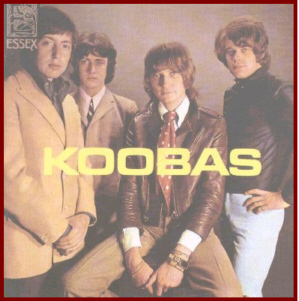
The Koobas
Koobas
(Columbia; 1968)
Poor Koobas. They’d already decided to pack it in during the making of this their only album. Having been on the tour circuit for six years (supporting the Beatles, the Who, and Jimi Hendrix) they had struggled to identify with an audience and despite releasing a stream of singles, no-one bought into their particular brand of psych-R&B.
And so they holed themselves up in Abbey Road to record their album with Beatles engineer Geoff Emerick, and it sounds like they just thought “fuck it,” deciding instead to just have fun. That feeling is there all over this album, pinballing from the razor sharp Rickenbacker guitars and hammering “Rain”-like drums on the power pop of “Royston Rose,” “Barricades,” and “Gold Leaf Tree,” or their choice to make a fuzz-toned take of “A Little Bit Of My Heart” which looked back to their R&B roots. The songs themselves are interspersed with found sounds and snatches of dialogue. They also included, which seemed to be obligatory on most albums produced in Abbey Road, the whimsical Victoriana on the closing “Circus,” evoking sawdust, candy floss, scary-ass clowns, and “Being For The Benefit Of Mr. Kite.” The only negative thing is that it doesn’t include their excellent rock ‘n’ soul version of Cat Steven’s “The First Cut Is The Deepest” which is much better than P.P. Arnold’s better known version. It would have been great to see what they could have created had they stuck together.
Danny Roca
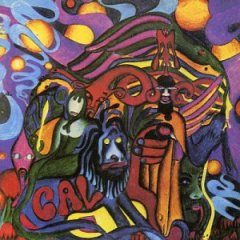
Gal Costa
Gal Costa
(Universal; 1969)
Dear All Music Guide: do Os Mutantes warrant the “obscuro” tag and Gal Costa doesn’t because Gal actually has an indisputably awesome, talented voice? Does weirdness necessarily correspond with an amateurish (read: lack of versatility) approach, and not with the completely un-predictable, genreless stew that is Gal Costa’s second album?
“Cinema Olympia,” as it is informally called to distinguish it from the other self-titled release she put out in the late ’60s, is a landmark album. Whatever bossa nova and Brazilian influences might have inspired Costa initially, this is pure psychedelic music: a reminder of how, in rare instances, American and British cultural imperialism could be turned on its head. Which is to say, as much as Costa was inspired directly by Western music, even if she was singing in English it would be hard to mistake this for a Western pop album.
It’s an album of vast sonic manipulations, but it still feels like it was done live in a single take; such is the energy and strength of her voice. Even the moments she fucks with vocal effects don’t feel overdone: “Meu Nome E Gal” (which, if my Portuguese isn’t too far off, means “My Name is Gal”) is nothing less than a defiant celebration of existence and freedom, and when her voice descends into eerie reverb at the end it’s less out of the drug-fuelled head-trip mentality of most psychedelic music than it is out of sheer playfulness. And yeah it’s sexy, but always in a self-conscious way: she no sooner seems to relax into the soft croon of a ballad than she’s off on some wild tangent (Costa could scream and somehow hit the right note at the same time in a way that no-one else, Björk not withstanding, seems to have been able to achieve), or manipulating her vocals in such a way as to sound like she’s fading into the background. “Cinema Olympia” isn’t an album of intimacy, but one that lures you with suggestions of vulnerability only to smack you in the face: few albums are simultaneously so aware of all the subtle tricks and seductions of pop music while completely subverting them at the same time.
Joel Elliott
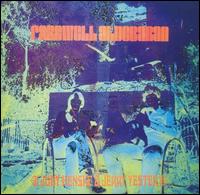
Judy Henske & Jerry Yester
Farewell Aldebaran
(Straight; 1969)
When Frank Zappa launched his Straight and Bizarre record labels, the intention was to house all the noiseniks, ne’er-do-wells, and freaks on Bizarre and the more palatable and mainstream artists that he and his cohort Herb Cohen discovered on Straight. I’m not 100% certain what qualified someone as being a “Straight” band versus being a “Bizarre” band but apparently 1969’s Trout Mask Replica was, by Zappa’s standards, definitely not “Bizarre.” Huh.
This may come to partly explain the “Straight” release of the eclectic Farewell Aldebaran, released by Jerry Yester and his wife, Judy Henske. Although Captain Beefheart was a talented media-player and his close affiliation with Frank Zappa certainly did him no harm, Farewell Aldebaran was released with little fanfare and failed to spark the public’s attention. This is understandable: Judy Henske, so far, had a confusing career, releasing a troupe of proto-folk-rock albums as well as turning her hand to Gerswhin covers and TV appearances on the Judy Garland Show; Jerry Yester had been working behind the scenes, playing keyboards with Tim Buckley and helping him develop his sound, producing The Association, even replacing Zain Yanovsky in The Lovin’ Spoonful, but this was when they were already on the wane so Yester was doomed to be the seminal also-ran. It’s strange to think that these two artists would produce an album as eclectic and downright odd as Farewell Aldebaran.
Based around Henske’s gothic lyrics, the album covers such themes as the death of the universe, drowning soldiers, the end of the world, and, on the stomping “Snowblind,” the story of Fallbrook Sedgewynd, who, sick of being spurned by the women he falls in love with, buys a bear that eats them—okay…? Almost as if to mimic the freewheeling thoughts, the album contains a toxic brew of late 1960s styles, as though each song was recorded and sung by a different band. Baroque Wurlitzer pop? Got it. You want a song about church that sounds like a Nazi rally? Covered. You want some soulful quiet storm years before Smokey did it? Done. Raw, riff-led blues rock that the Raconteurs would shit themselves for? First track. And look, I’ll throw in this medieval song as interpreted by Marlene Dietrich as well. Not impressed? What do you want? Moog-based space rock? Try a little harder, my friend. Maybe the sheer bravado of the album is what led to its lack of sales. Maybe by trying to please everyone they didn’t please enough of the right people. Maybe the strong melodies and lush production were too pretty to be deemed truly avant-garde for the scenesters. It’s hard to tell, but 40 years on, it makes perfect sense.
Danny Roca
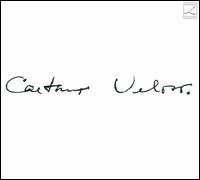
Caetano Veloso
Caetano Veloso
(Philips; 1969)
This is Caetano Veloso’s “white album,” not because of its pallid cover or its alternative Portuguese title of Álbum Branco, but because it represents the Brazilian maestro’s loosest and most eclectic effort of his career. To be sure, though, eclecticism typically isn’t something to marvel at when dealing with a bona fide Tropicália release such as this; the genre essentially sprang from the milky bosom of half a dozen other styles—principle among these being Bahian folk, bossa nova, and western psych-rock—and sustained itself under the unifying (though hardly self-sufficient) principle of antropofagia, or artistic cannibalism. It’s fitting, then, that on his second solo effort Veloso, who co-founded the Tropicália movement (or at least its musical strand) with friend Gilberto Gil, would dramatically expand Tropicália’s artistic parameters by more strongly adhering to its core ethic of antropofagia. Veloso hungrily incorporates polka, flamenco, and spoken-word avant-garde into the movement’s already overflowing palette within the course of the album’s 42 minutes. Closer “Alfômega” even dabbles in krautrock, mimicking the then-burgeoning scene so well that it may be seen as a precursor to Can’s “I’m So Green” from Ege Bamyasi (1972).
Though now, after fan-boyishly building up Veloso’s synthetic powers, I must push my glasses a little farther up the bridge of my nose and note that, in fact, this album’s staggering diversity owes a lot to producer Rogério Duprat, whose colorful arrangements adorned many other Tropicália releases, including Os Mutantes’ first two records. Veloso and Gilberto Gil recorded the acoustic guitars and vocals (which were performed in Portuguese, Spanish, and English) in a studio in Salvador (where the two artists were under confinement by the authoritarian Brazilian government for their “subversive” activities) and sent the songs to Duprat, who then added drums, bass, electric guitars, horns, strings, accordion, etc. Veloso no doubt had many of the arrangements in mind when he wrote these songs, but here is as good a place as any to give due credit to Duprat, truly one of Tropicália’s unsung heroes. Together, Veloso and Duprat constructed one of the ephemeral movement’s most indispensable albums and, despite lacking the unbridled playfulness of early Os Mutantes or the sheer craziness of Gal Costa’s two 1969 releases, Caetano Veloso’s second solo work made great strides in expanding Tropicália’s motley patchwork of influences while bringing together its divergent threads into one vibrantly kick-ass quilt.
Traviss Cassidy

Cro-Magnon
Orgasm
(ESP-Disk; 1969)
Heh. I’m not even entirely sure what to say about this beast—especially since we know so little about this band, beyond, more recently, their names. But: “Caledonia,” from the moment those drums announce themselves, is the heaviest track the sixties had to offer, a brief moment in pop music history where the bag pipe was awesome, an avant-garde self-implosion, and a seriously great pop tune, all at the same time (even if Alastair Crowley wants his groove back). The rest of the album is more typical avant-fare. “Ritual Feast of the Libido” is basically Austin Grasmere screaming; “Organic Sundown” may be tape manipulated (there’s definitely overdubs) but predates Cornelius Cardew’s The Great Learning by two years (and also reflects the musical spasms of the Mothers of Invention’s “Return of the Son of Monster Magnet,” and—I may just be hearing things—but it kind of sounds like Frank Zappa and Roy Estrada are present); it’s not until “Crow of the Black Tree” where we get something resembling typical instrumentation (an acoustic guitar); “Toth, Scribe I” sounds like the unfiltered basic track of a Philip Jeck piece; and “First World of Bronze” takes a page from Hair (the musical, I mean) but makes it way better. And yeah—this is the type of album-length eclectic insanity we never see anymore, because rarely do we get bands capable of providing different kinds of insanity at once. But even if the only thing you can stomach is “Caledonia,” I’m not mad at you—that’s one fucking awesome song.
Mark Abraham
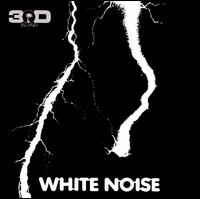
White Noise
An Electric Storm
(Island; 1969)
“MANY SOUNDS HAVE NEVER BEEN HEARD—BY HUMANS: SOME SOUND WAVES YOU DON’T HEAR—BUT THEY REACH YOU. ‘STORM STEREO’ TECHNIQUES COMBINE SINGERS, INSTRUMENTALISTS AND COMPLEX ELECTRONIC SOUND. THE EMOTIONAL INTENSITY IS AT A MAXIMUM.”
As pompous and portentous as any statement made on a number of albums in the ’60s but in An Electric Storm, finally, one that could deliver on its promise. White Noise was the brainchild of the electronica pioneers from the BBC Radiophonic Workshop—the British TV station’s sound effects department who, through a desire to combine music and science, had been creating mind-blowing soundtracks and incidental music to a menagerie of programmes, work that included the astounding “Doctor Who Theme”—and classically trained David Vorhaus. A brief scan of the credits (aside from percussion and vocals, the cast includes production coordinator, electronic sound realisation, sound base transfer coordinator, and special stereo effects devised by someone with a Bachelor of Science in Electronics), this is definitely not the sound of a few drop-outs getting stoned and playing about with found sounds—leave that to Pink Floyd.
At 35 minutes, An Electric Storm took a painstaking year to make (except for the final track which was jammed in one day as Island had yet to hear a single note and were screaming for the tapes) but rather than being down to creative frippery, it is instead a testament to an indomitable tenacity and dedication. On listening to the album’s terrorising atmospherics and otherworldly sounds it would be easy to dismiss them to any X number of samples and synthesisers, a presumption that would be, on the surface, fair. Except, where samplers record a sound and automatically play with pitches and frequency levels in order to be played through the console that is the synthesiser keyboard, White Noise had to create each note by hand. Each note. Every note on the album is a result if someone recording a sound (like a laugh or a glass breaking) onto a spool of tape. That tape was then re-recorded, spliced, sped up, filtered, and chopped to create each semi-tone. Then those individual notes were ordered, spliced, filtered, and stuck together again to make a melody line. And then there’s the bass line. And the counter melody. And the harmonies. And the incidental sound effects. And the vocal treatments.
This is beyond music, this is the beautiful demonstration of physics in action. As for how it sounds? CMG reviewed the re-release last year. A truly dumb-founding album that pre-dates other chop-and-change artists like Steinski, Girl Talk, and Matmos by decades. Unbelievable.
Danny Roca

The Meters
The Meters
(Sundazed; 1969)
Behold: drums! Drums fleet, limber, uppity, plasticene, turbid, verbose: fucking drums! The Meters’ 1969 debut lacked the pop-smart glimmer of James Browns’ work in the era, Cymandes’ ripped-psych fury, or the jazzy dynamism of a dozen or so artists in the next few years (let’s go with Eugene McDaniels here)—what it had in the place of such tripe were drum lines, fourteen of them across fourteen tracks, each one the point on the track around which rotated the lack of lyrics, the tittering guitars, the burbling organs, the pensive bass. It is the sound of a band in absolute control of itself, drums on high until funk ascended to heaven most high. The Meters’ debut is to James Browns’ ’70s Polydor work as the Ramones’ debut was to Sonic Youth. Bet.
Clayton Purdom
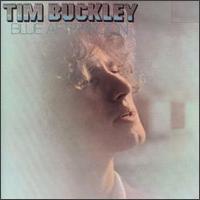
Tim Buckley
Blue Afternoon
(Straight; 1969)
Nothing beats Starsailor (1970), easily within my top 2 or 3 albums of all-time, but Buckley cut a string of phenomenal albums in the late ’60s. The best of these is probably Blue Afternoon which found Buckley in the midst of his most fertile, prolific period: he’d just finished recording Happy/Sad (1969) and within a month he would record Lorca (1970) and begin to work on the material for Starsailor. Rather than coming off as a direct precusor to the heavier avant-garde period manifest in the latter two albums, Blue Afternoon may be his softest, most atmospheric record. Master vibist David Friedman (not the producer who plays with Mercury Rev) is key to the mood, but Buckley’s voice really comes into its own here: the arrangements allow him to stretch notes out for several bars at a time and, considering his already-phenomenal vocal skills (dude was only 22 when he cut this, his fourth album), this is a blessing.
On “Chase the Blues Away,” his voice barely rises above a hushed croon but manages to be powerful and romantic at the same time, like a quick kiss by a bridge on a rainy night. While on Starsailor he would be pushing his voice for all it was worth (which may be why he quickly went downhill afterwards), his vocals here sound totally effortless and opener “Happy Time” epitomizes the freedom it conveys, conducting a meta-ode to the therapeutic value of hitting the right melody. But even in the songs where Buckley documents his threadbare loneliness he sounds confident, as if he suddenly has all the time in the world. The musicians are equally adept at treading in his smoky-café jazz-folk, winding beautiful contrabass, piano, vibes, clean electric guitar, and various percussion into the vast crevices of Buckley’s words. And finally, to prove he hasn’t gone completely lounge, there’s “The Train,” the best approximation of where his music would quickly be heading. Buckley builds the song to a stirring climax with his howls and wails, drastically shifting from classy and romantic to primal, dripping with sexuality as Lee Underwood showcases a wildly abstract progressive jazz guitar. Sure, Buckley might be in earnest, but it sounds like a lascivious come-on when he sings, “Mamma, what you gonna do for love?”





